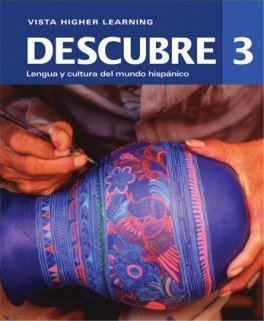
All Solutions
Page 334: Que aprendiste?
|True | False |Sentence |
|–|–|–|
|**TRUE** |- |1. Es muy frecuente ver a gente bebiendo mate en el Uruguay. / *It is very common to see people drinking mate in Uruguay.* |
| -| **FALSE**|2. El recipiente para el mate suele ser de metal. / *The mate container is usually made of metal.* |
|**TRUE** |- |3. La bombilla es el tuba que se utiliza para beber el mate. / *The bombilla is the tuba used to drink the mate.*|
|**TRUE** |- |4. El mate se bebe principalmente en Argentina , el Uruguay y el Paraguay. / *Mate is drunk mainly in Argentina, Uruguay and Paraguay.* |
|**TRUE** |- |5. Los primeros en consumir la yerba mate coma infusión fueron las indígenas guaraníes. / *The first people to consume yerba mate as an infusion were the Guarani Indians.* |
|- | **FALSE**|6. La bebida se hizo popular muy rápidamente entre la población no indígena. / *The drink quickly became popular among the non-indigenous population.* |
| **TRUE**|- |7. Los jesuitas intentaron prohibir todo tipo de infusiones hechas con yerba mate. / *The Jesuits tried to prohibit all kinds of infusions made with yerba mate.* |
|- |**FALSE** |8. La mateína altera las patrones del sueño mas que la cafeína. / *Mateine alters sleep patterns more than caffeine.* |
|- |**FALSE** |9. Cuando un grupo de personas toma mate, cada persona toma de un recipiente distinto. / *When a group of people drink mate, each person drinks from a different container.* |
|- |**FALSE** |10. El mate tiene minerales, pero no vitaminas. / *Mate has minerals, but not vitamins.* |
|**TRUE** | -| 11. La persona que sirve el mate se llama “cebador “. / *The person who serves the mate is called “cebador”.*|
| **TRUE**|- |12. El mate es mas popular por su larga tradición que por sus propiedades para la salud. / *Mate is more popular because of its long tradition than because of its health properties. health properties.* |
* **El recipiente del mate puede ser de diferentes materiales.** / *The mate container can be made of different materials.*
* **No, de hecho se hizo famosa entre indígenas y esclavos.** / *No, it became famous among the indigenous people and slaves.*
* **La mateína no afecta el sueño.** / *Mateine does not affect sleep.*
* **Todos toman mate del mismo envase.** / *Everyone drinks mate from the same container.*
* **El mate contiene vitaminas y minerales.** / *Mate contains vitamins and minerals.*
a. un grupo de teatro clásico.
b. un ritmo africano.
**c.** un genera musico-teatral.
**a.** enero
b. febrero
c. marzo
a. trigo
b. café
**c.** arroz
a. té frio
b. terere
**c.** jugo
**R:** Sí las hay, se llama “la más latina”, Y en mi ciudad se baila mucho la salsa, el danzón y el reguetón. / *Yes there are, it is called “la más latina”, and in my city they dance a lot of salsa, danzon and reggaeton.*
**R:** Creo que se usa para representar que es un producto por y para peruano. / *I think it is used to represent that it is a product by and for Peruvians.*
**R:** Sí, es algo fuerte, como un té, lo volvería a probar. / *Yes, it is a bit strong, like a tea, I would try it again.*
**R:** Depende de la bebida o la persona, pero por lo general no. / *It depends on the drink or the person, but usually not.*

